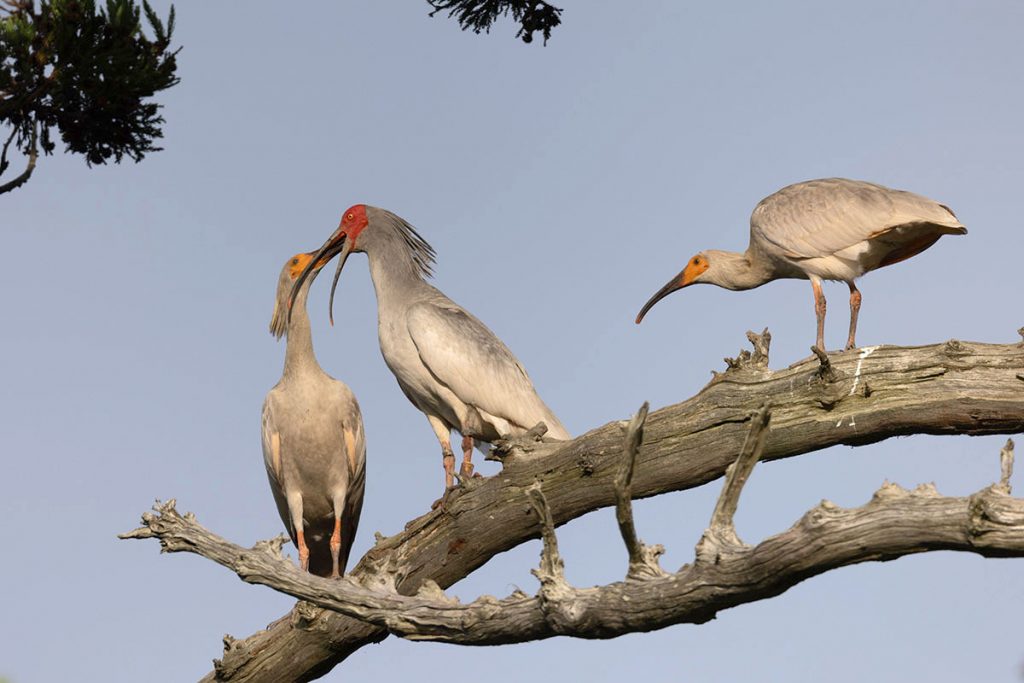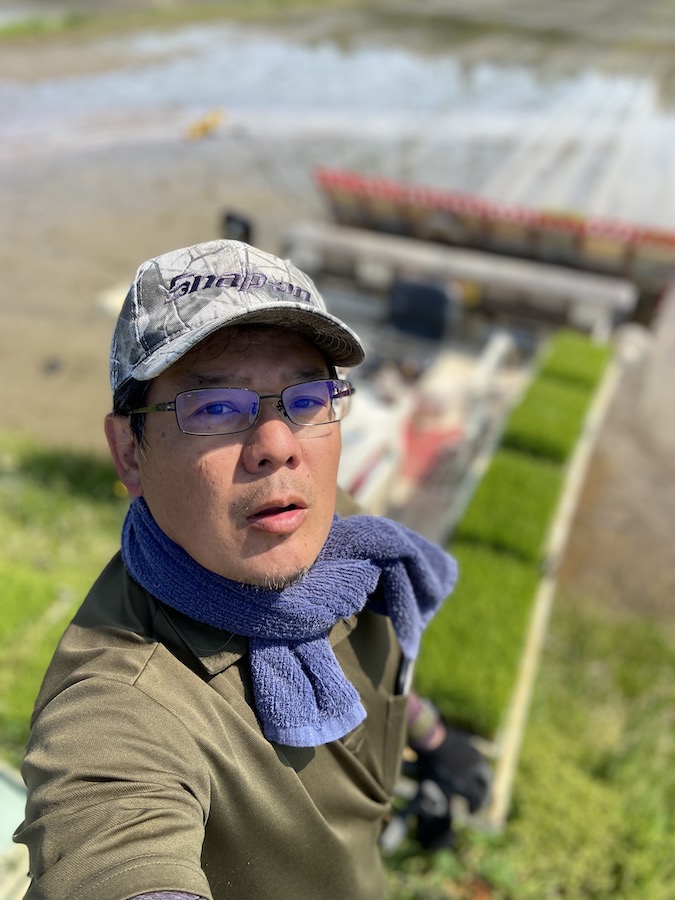
Young crested ibis siblings spread their wings fighting. (©Fumie Oyama)
Read the full story on Japan 2 Earth - Sado Wildlife in Focus | Newly Fledged Crested Ibis Chicks Take Flight!
Summer has arrived on Sado Island in Niigata Prefecture. The chicks of the endangered crested ibis, a special natural monument, have now left their nests and are testing their wings as they learn to fly. For now, the chicks still depend on their parents, but independence is just around the corner.
Orange Faces
It is early summer, and the sun rises on Sado around 4 am. I rise still sleepy in the mornings to head out early to get the best shots. My camera is focused on crested ibis chicks.
Although they are technically still chicks, the young birds have grown to almost the same size as their parents. At a glance, it is not easy to distinguish between parents and their offspring. But you can tell them apart by looking at their faces. The crest feathers on the back of the chicks' heads are still short. Above all else, their faces are not the bright red of adult birds, but a pale orange characteristic of ibis chicks.

The vibrant pink-orange color of the crested ibis feathers, known as toki-iro, or "ibis color" in Japanese, is attributed to the intake of carotenoids. This comes from the birds' diet of crabs and crayfish. The young chicks not only have pale faces but the color of their feathers is also still pale.
Continue reading the full story on Japan 2 Earth to learn more about how farmers are reacting to the black-tailed gulls.
And find more great articles on the environment and the challenges of achieving the SDGs on our affiliated website Japan 2 Earth (J2E), sparking a transition to a sustainable future.
RELATED:
- Sado Wildlife in Focus | Black-Tailed Gulls Descend on Sado in a Scene Straight from Hitchcock
- Preserving Satoyama: Ichikai Town Issues Ground-Breaking Ordinance to Protect the Grey-Faced Buzzard
- Protecting the Vulnerable Little Tern is No Simple Matter
(Read the article in Japanese.)
Author: Fumie Oyama
Click here to read more Sado Wildlife in Focus photo essays by photojournalist Fumie Oyama.

Fumie Oyama is a two-time winner of the Japan Newspaper Publishers & Editors Association Award as a photographer for the Sankei Shimbun. After covering the reintroduction of the crested ibis to the wild for 11 years, Oyama left the company in 2020 to move to Sado Island. There, he continues to photograph the ibis and other wildlife while engaging in farming. He currently promotes the charms of Sado Island as a photojournalist. Follow Fumie Oyama on Instagram.








